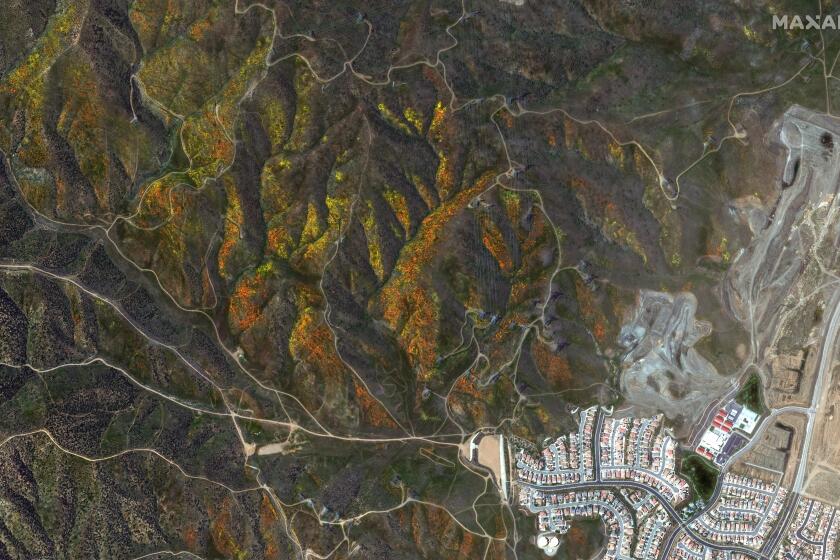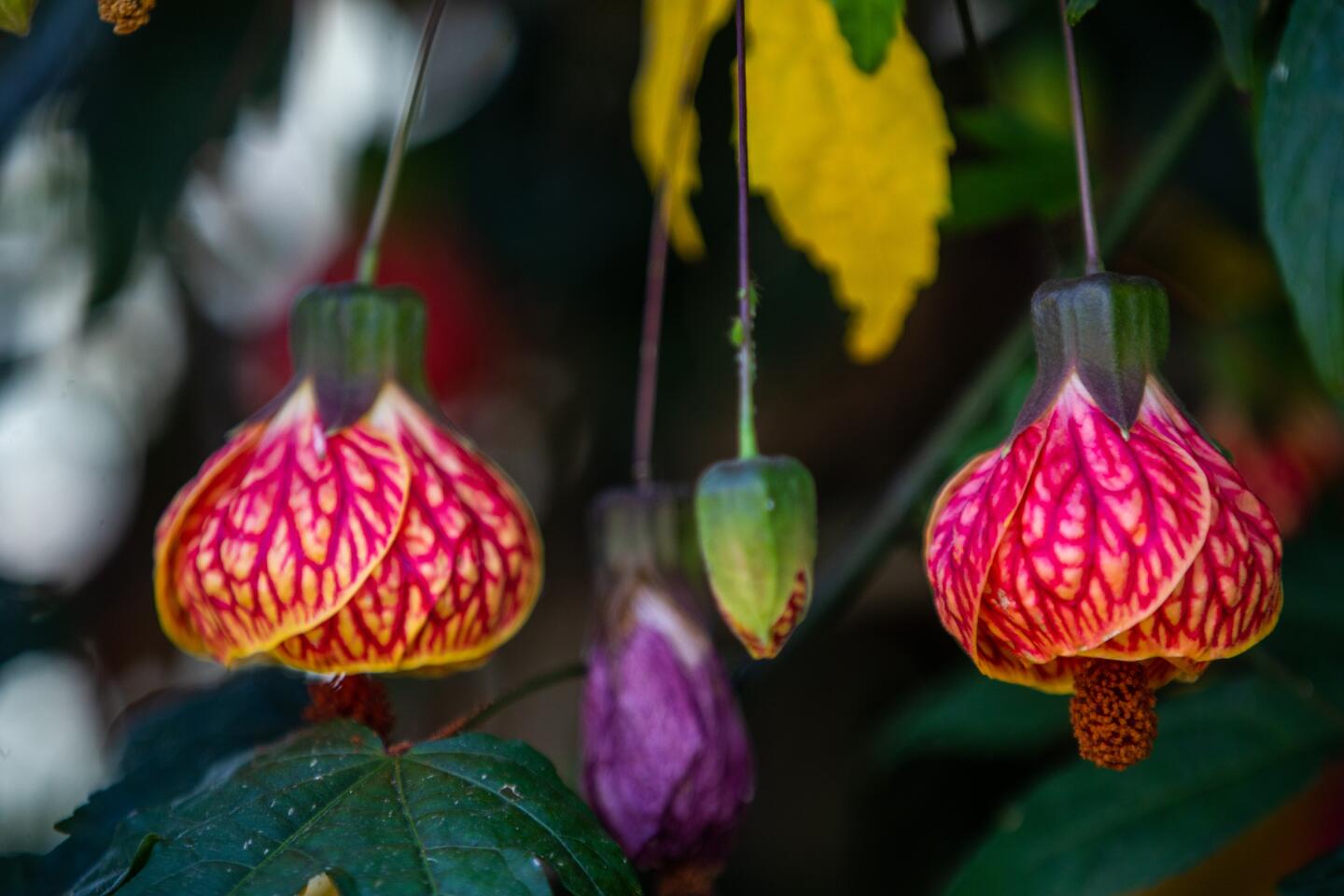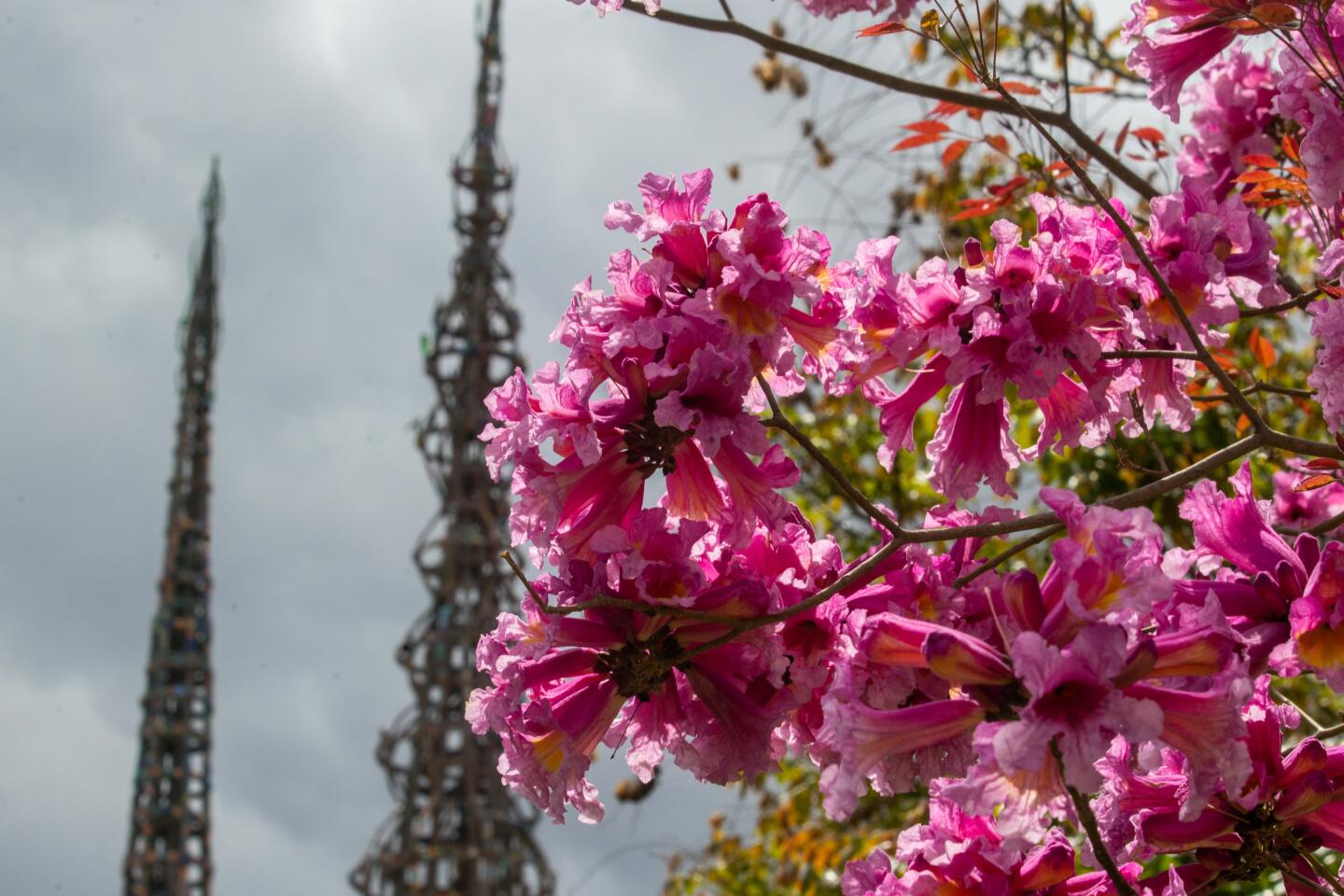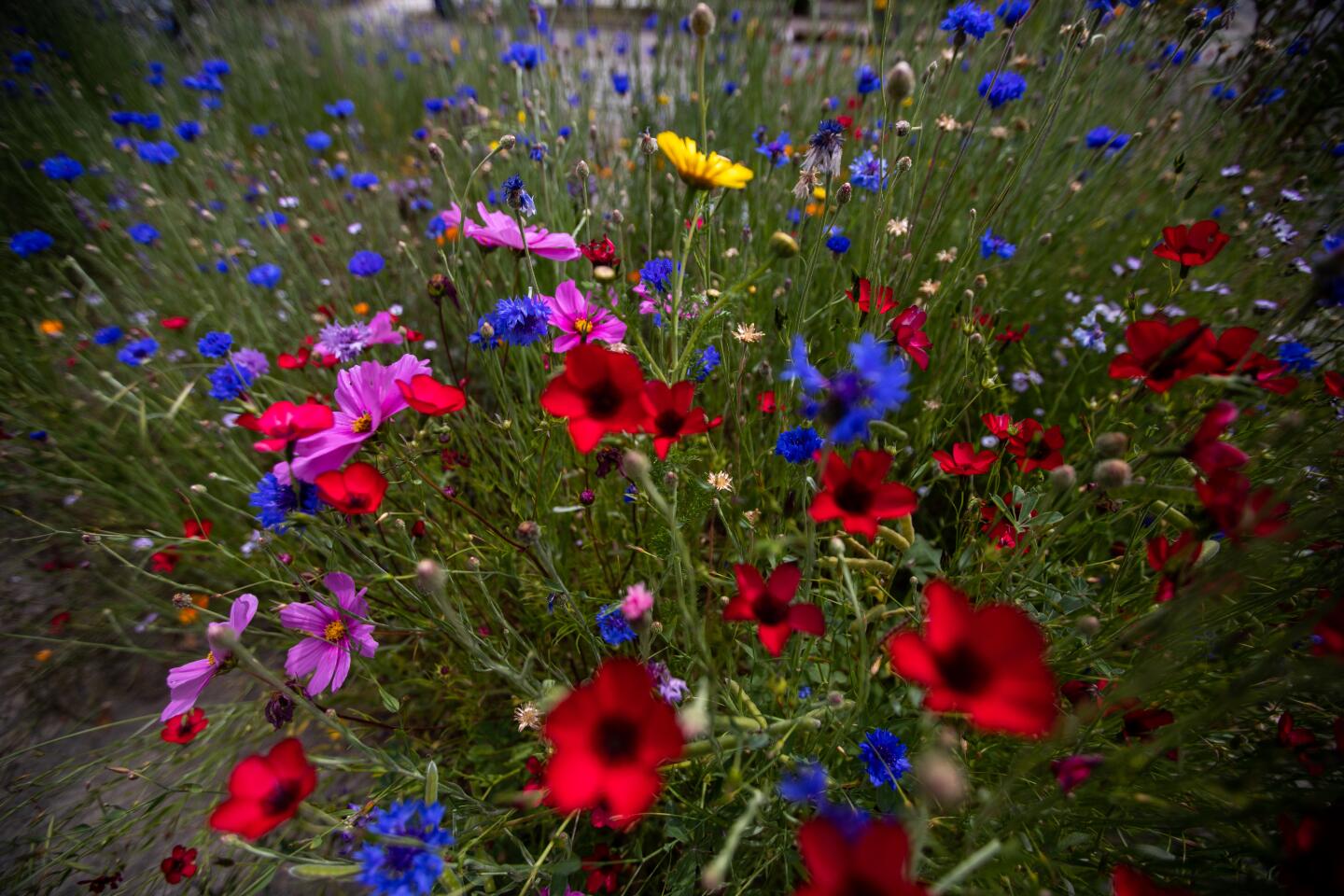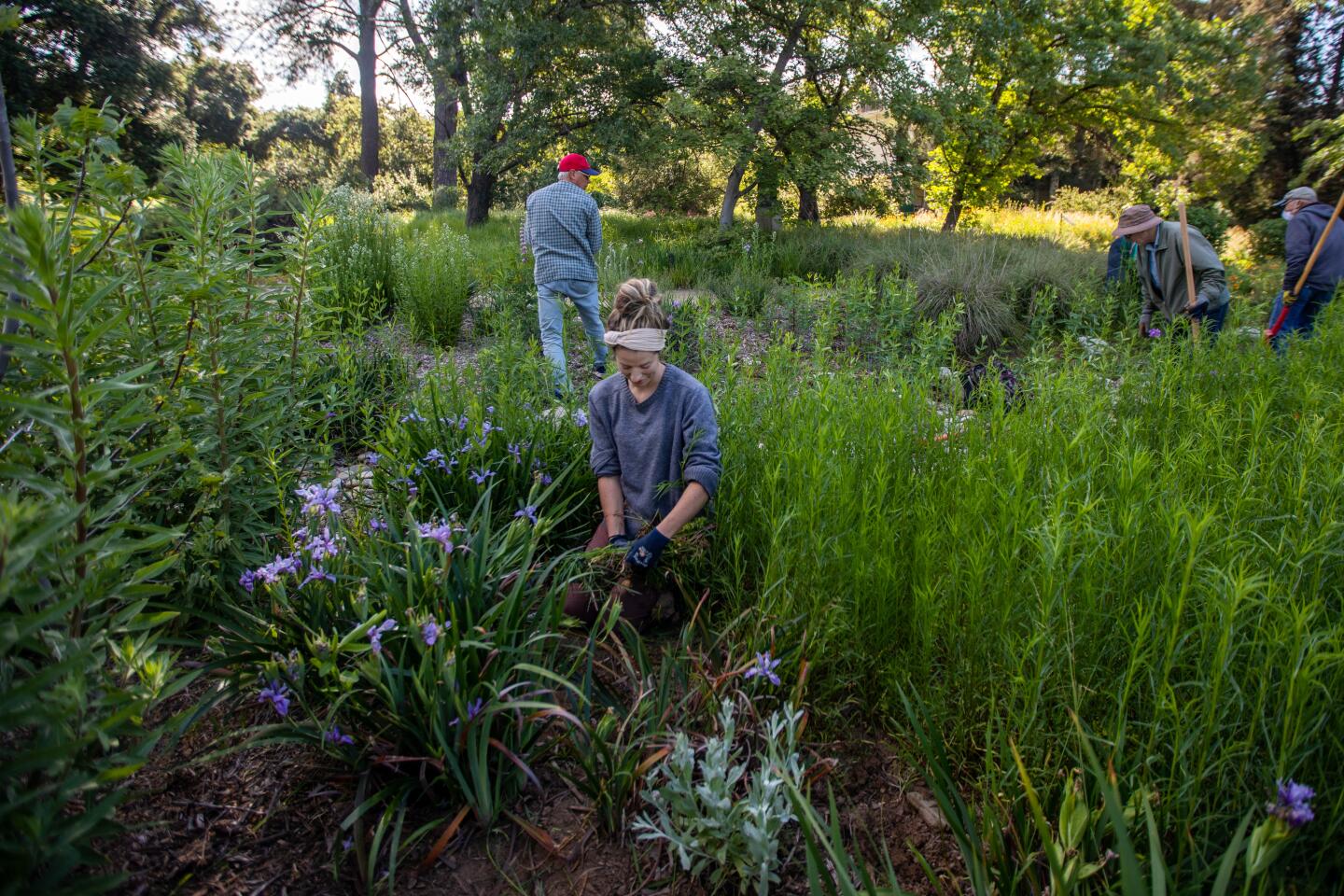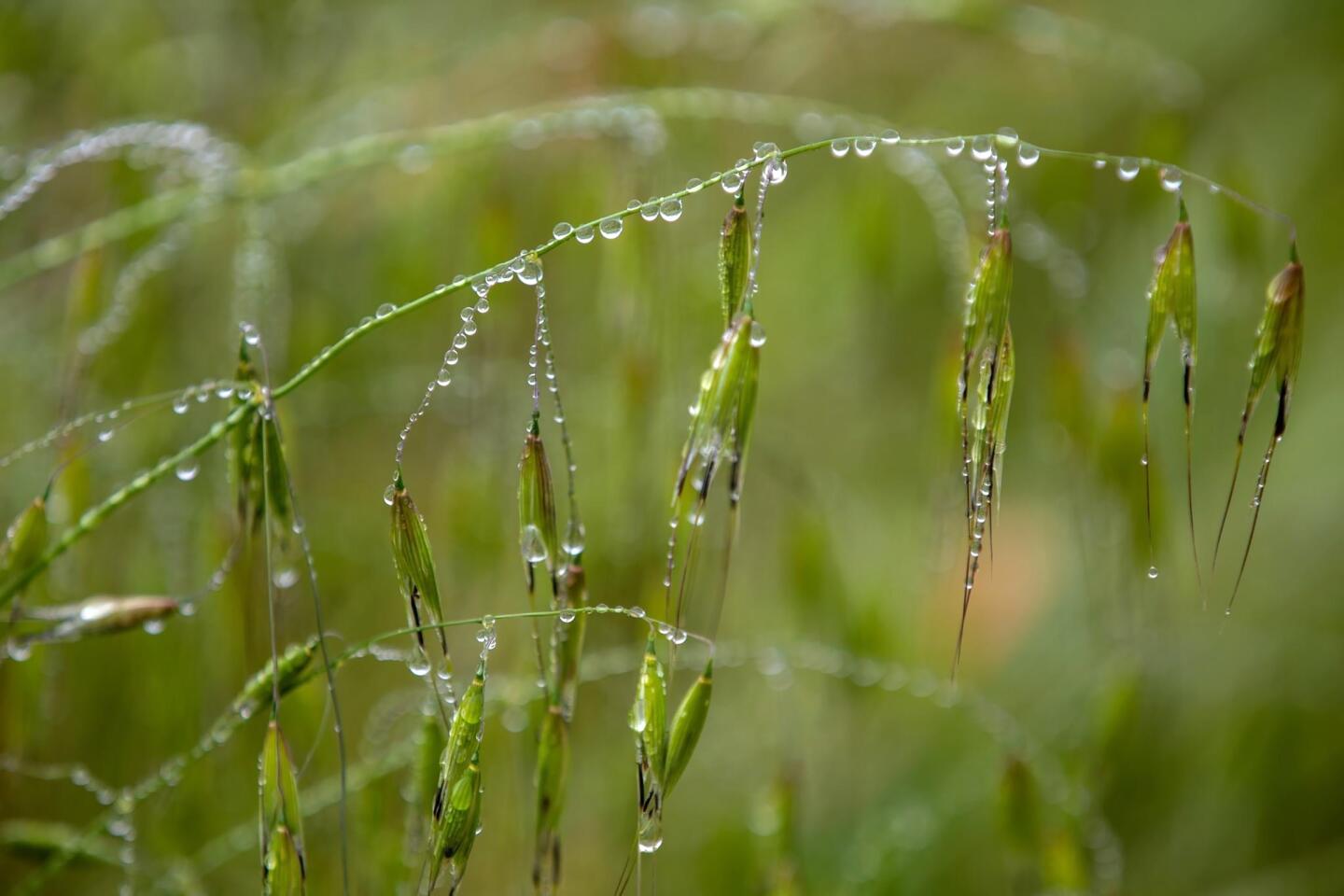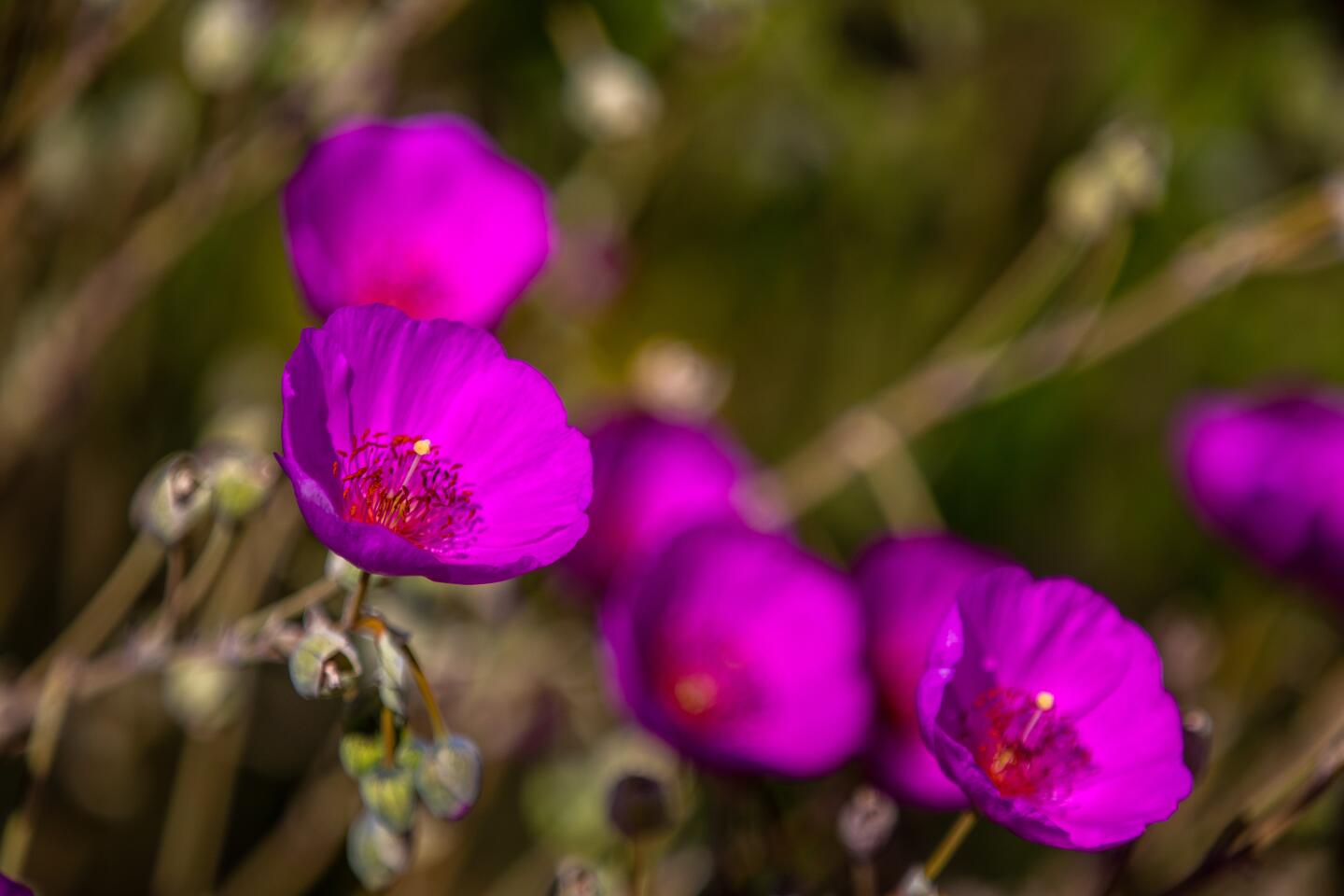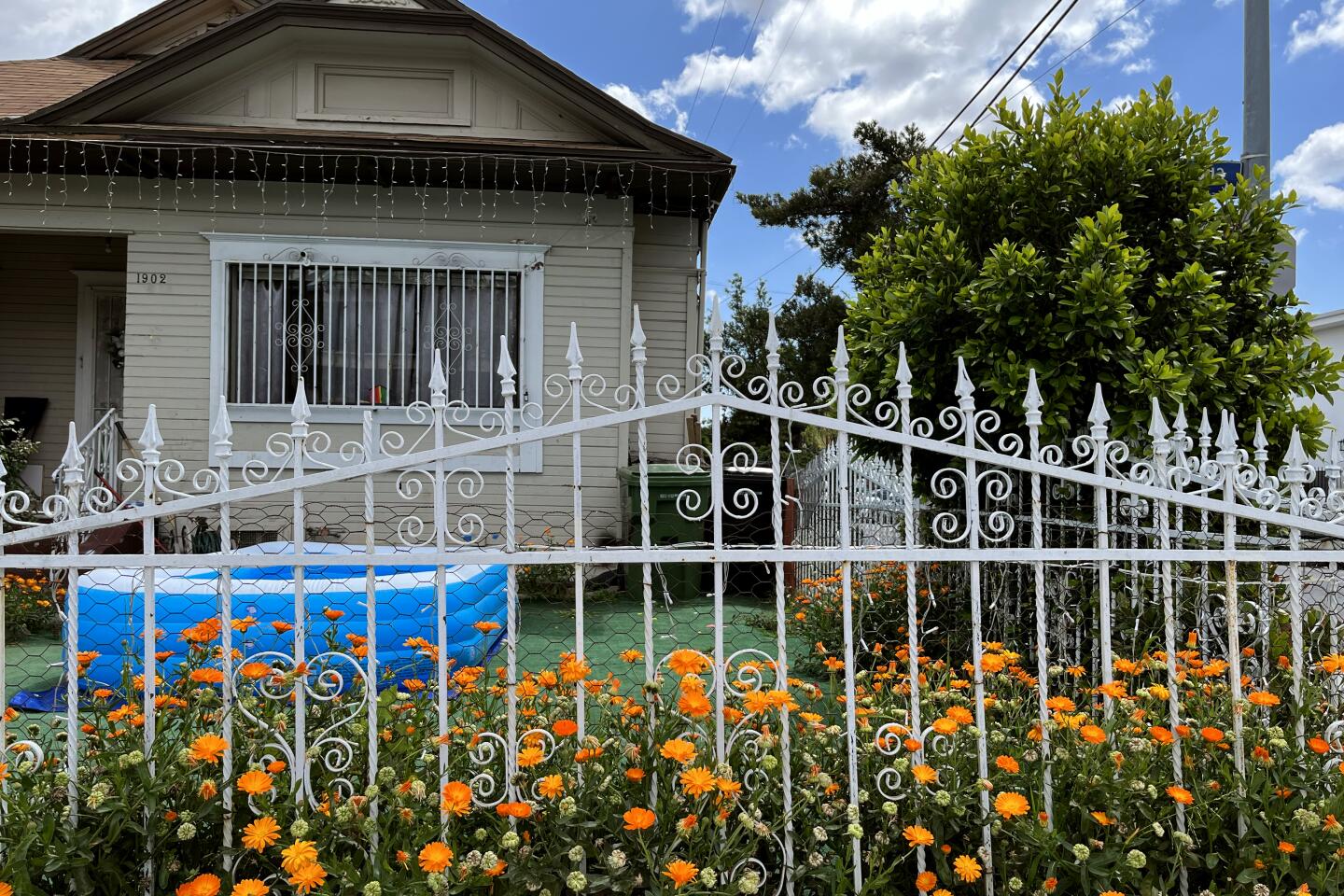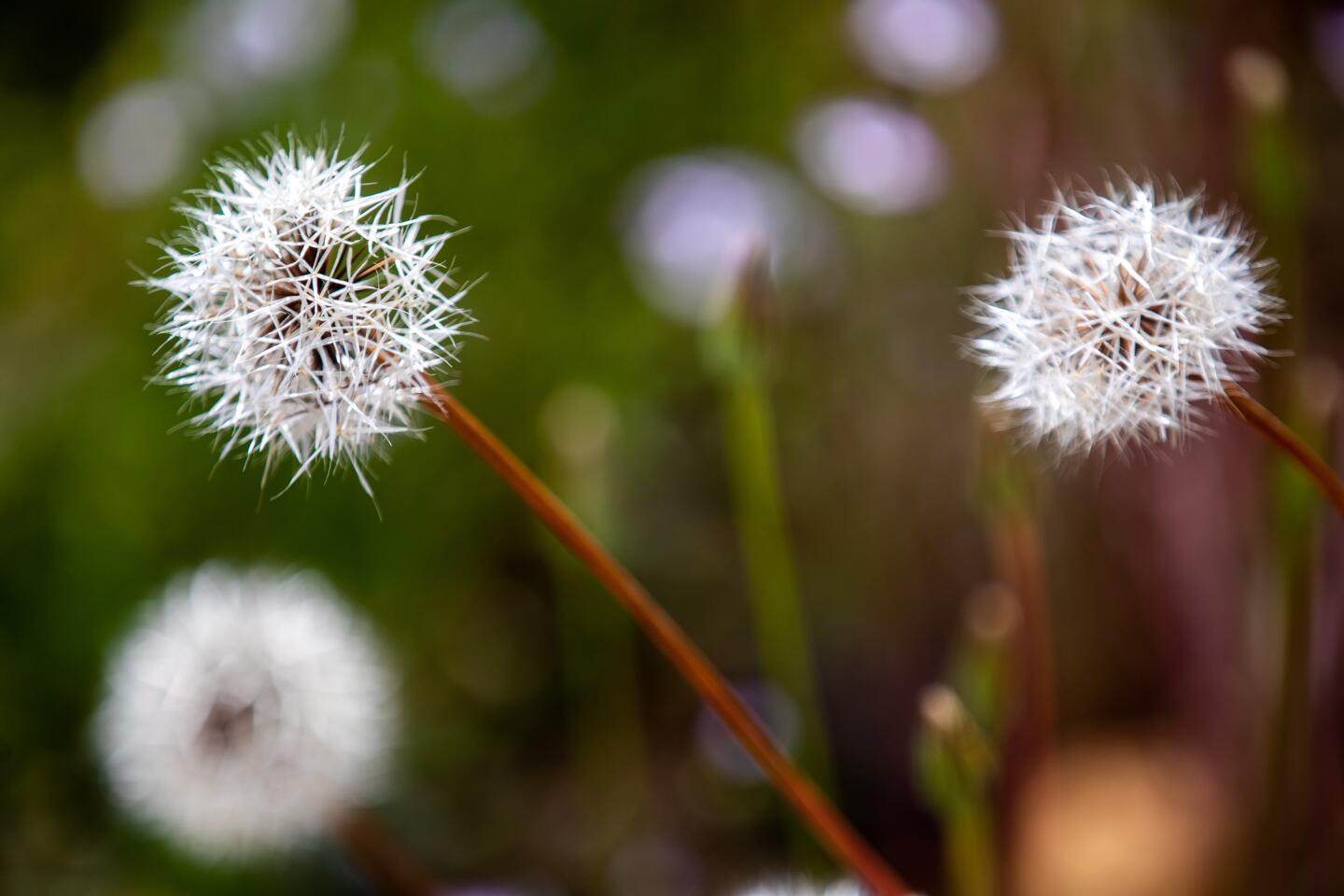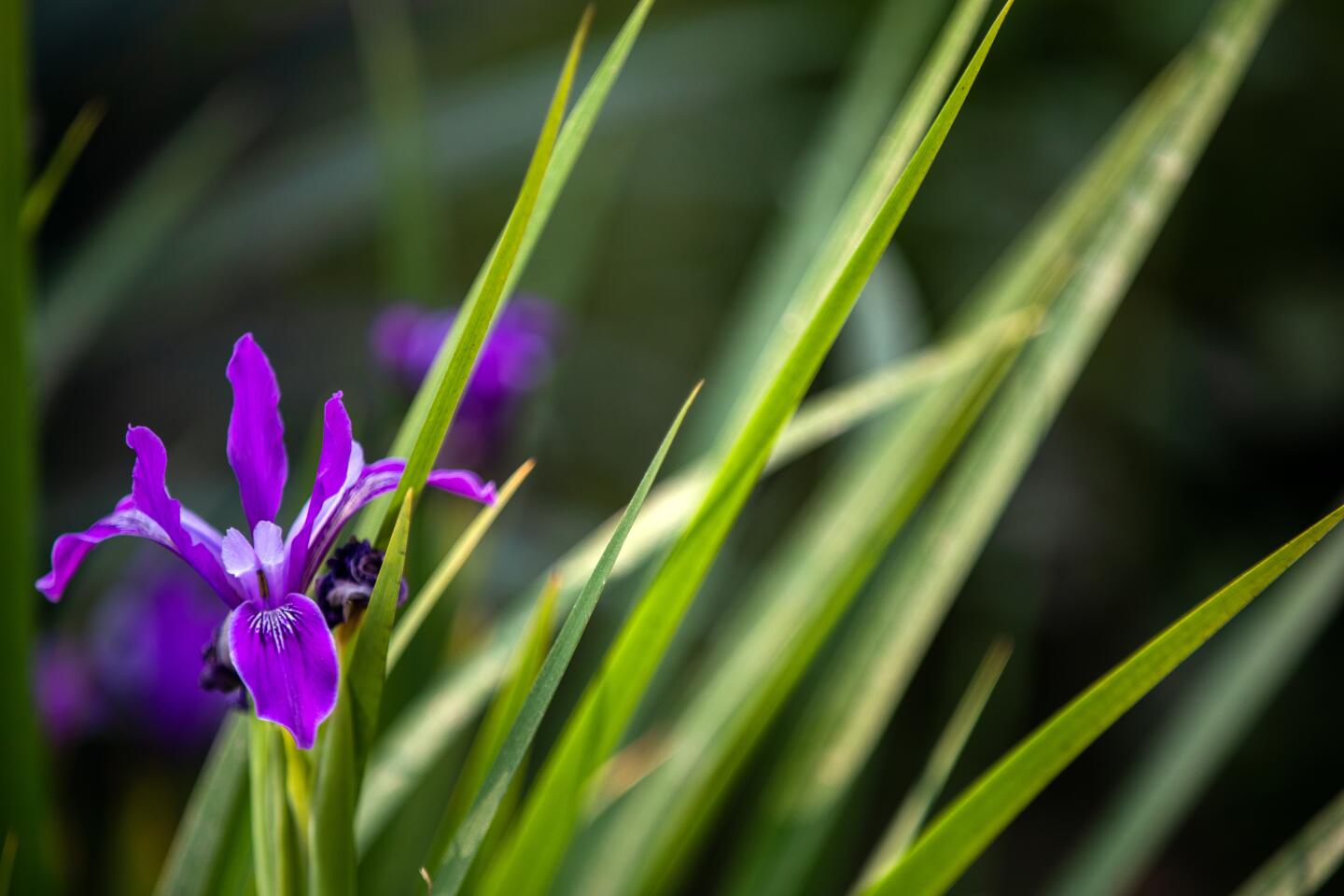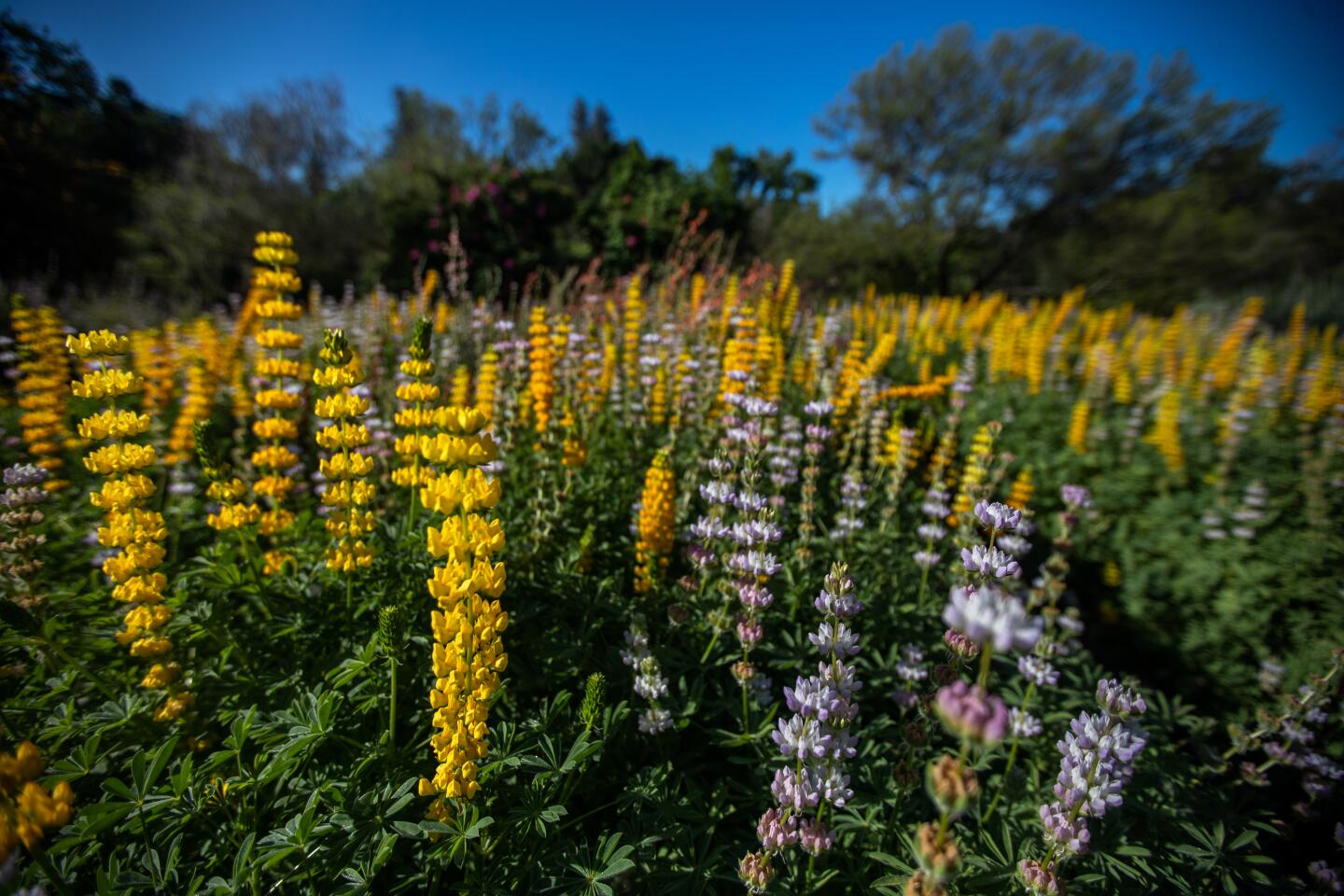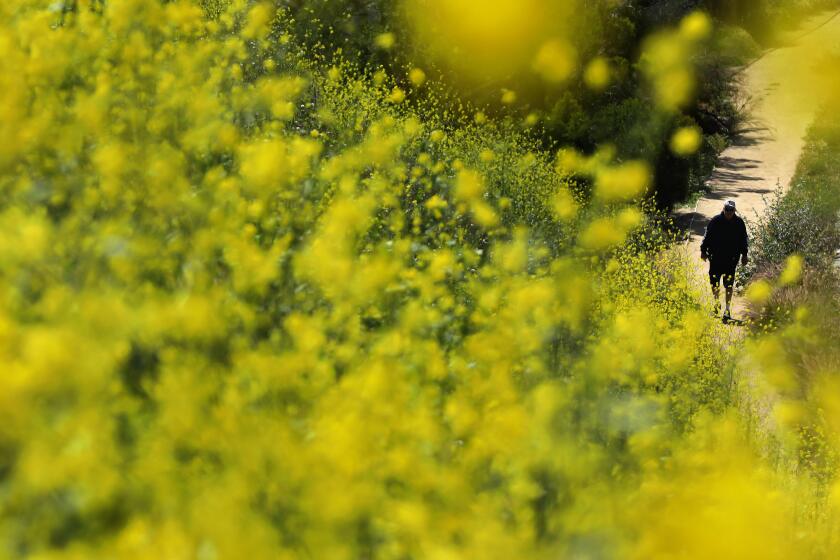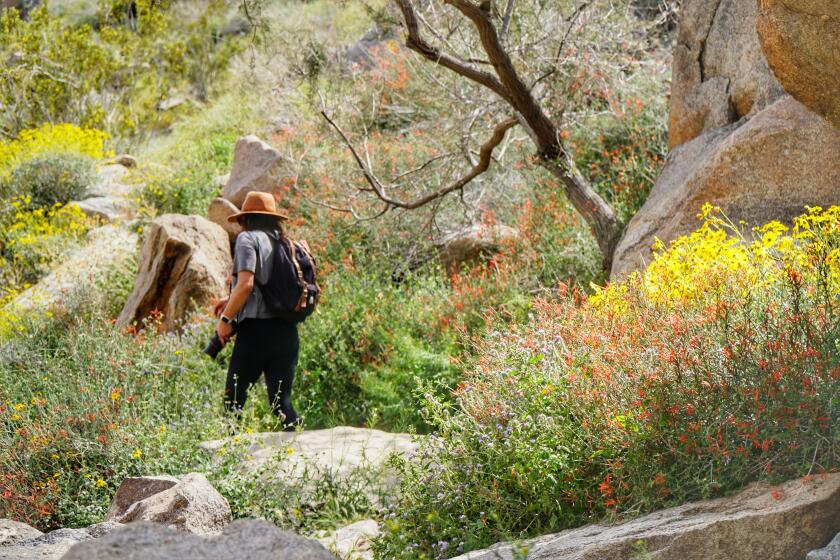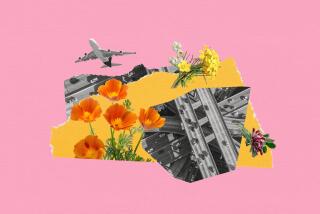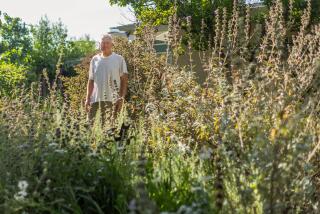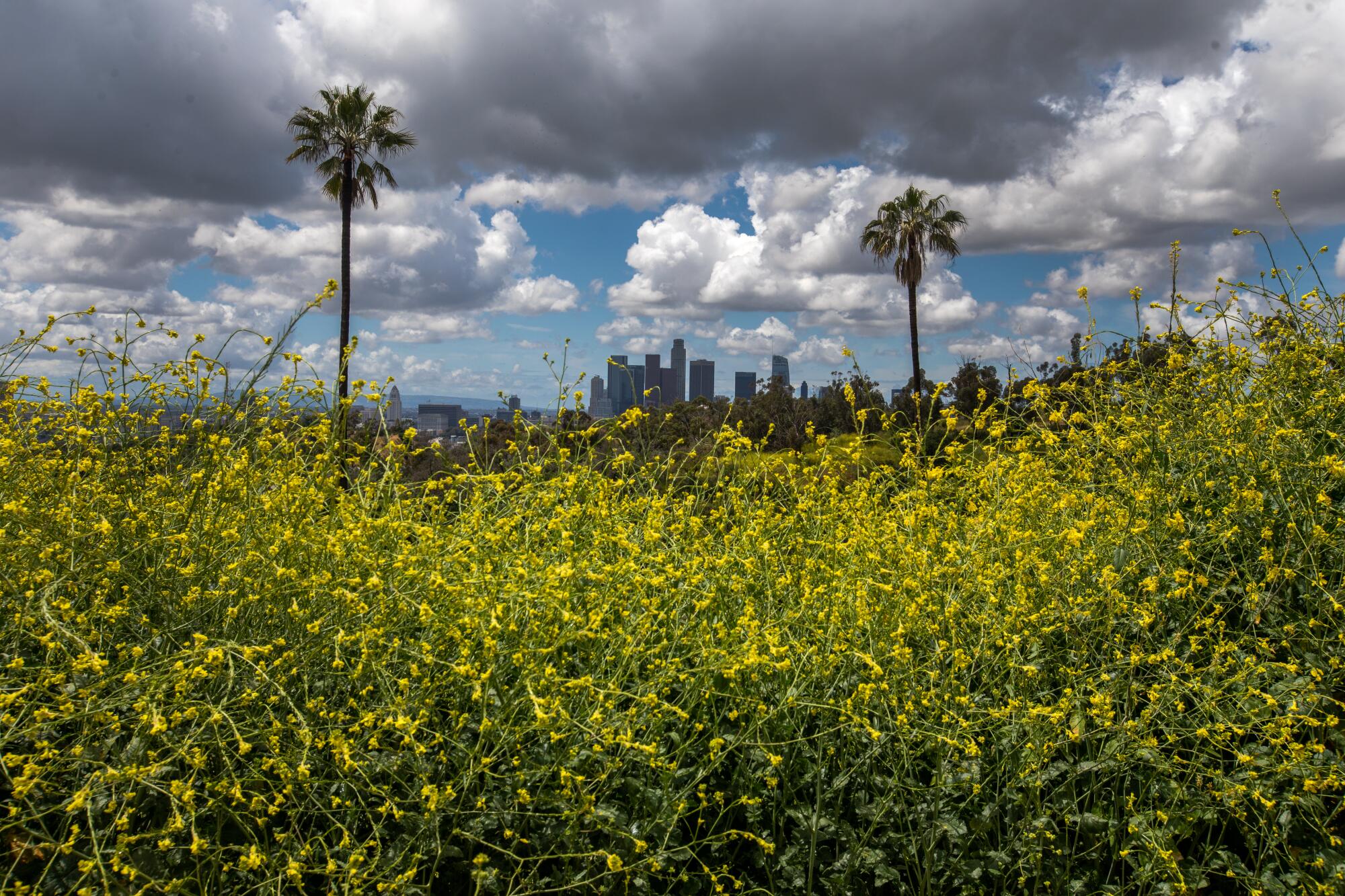
- Share via
There is always something growing inside the gated courtyard of the L.A. Catholic Worker Hospitality Kitchen, the Skid Row food distribution center better known as the “Hippie Kitchen.”
But this spring has super-charged the courtyard’s trees and lush greenery, which offer shade and sanctuary to the hundreds of neighborhood residents who come for the kitchen’s thrice-weekly meals.
“This plant here — I’ve never seen so many flowers on it,” marveled organizer Matt Harper, pointing to the berry-like blooms on a natal lily.
Magenta explosions of bougainvillea frothed over the kitchen’s gates and the cinder-block walls of the vacant lot next door. The Indian coral tree’s fire-colored blossoms popped against green leaves. There was even a calla lily blooming from a patch of dirt everyone at the kitchen thought had gone barren.
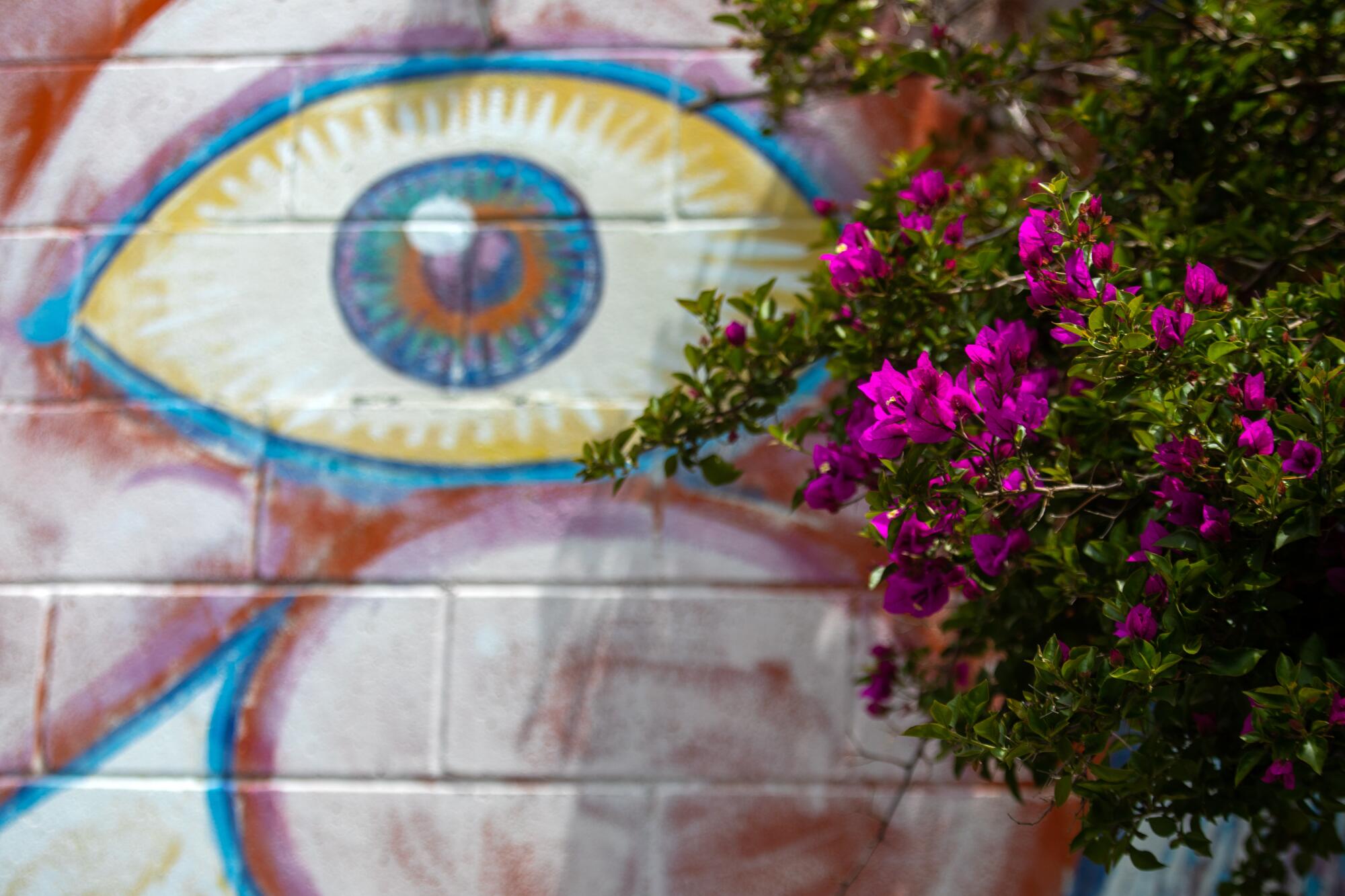
“We used to have all sorts of lovely flowers here, and then they all died off,” Harper said, looking down at the unexpected blossom. “But with all these rains you realize — the bulbs are there. They’re just waiting to bloom. Nature will take care of itself.”
Everything is growing everywhere all at once in Southern California.
The lush greenery in city parks, the mustard flowers electrifying the hillsides, the burst of unexpected blossoms from carefully tended gardens and sidewalk cracks alike — all of it is thanks to an ideal balance of precipitation and temperature that has catalyzed plant growth across the state.
Those 31 atmospheric rivers delivered steady, nourishing rainfall from October to March. Regional temperatures remained moderate as well, without any sudden early-spring heat waves to kill off fragile baby plants.
The combination of those two factors has produced “an absolutely glorious spring,” one that has been more vibrantly colorful for longer than any in recent memory, said Jeremy Yoder, a Cal State Northridge biologist.
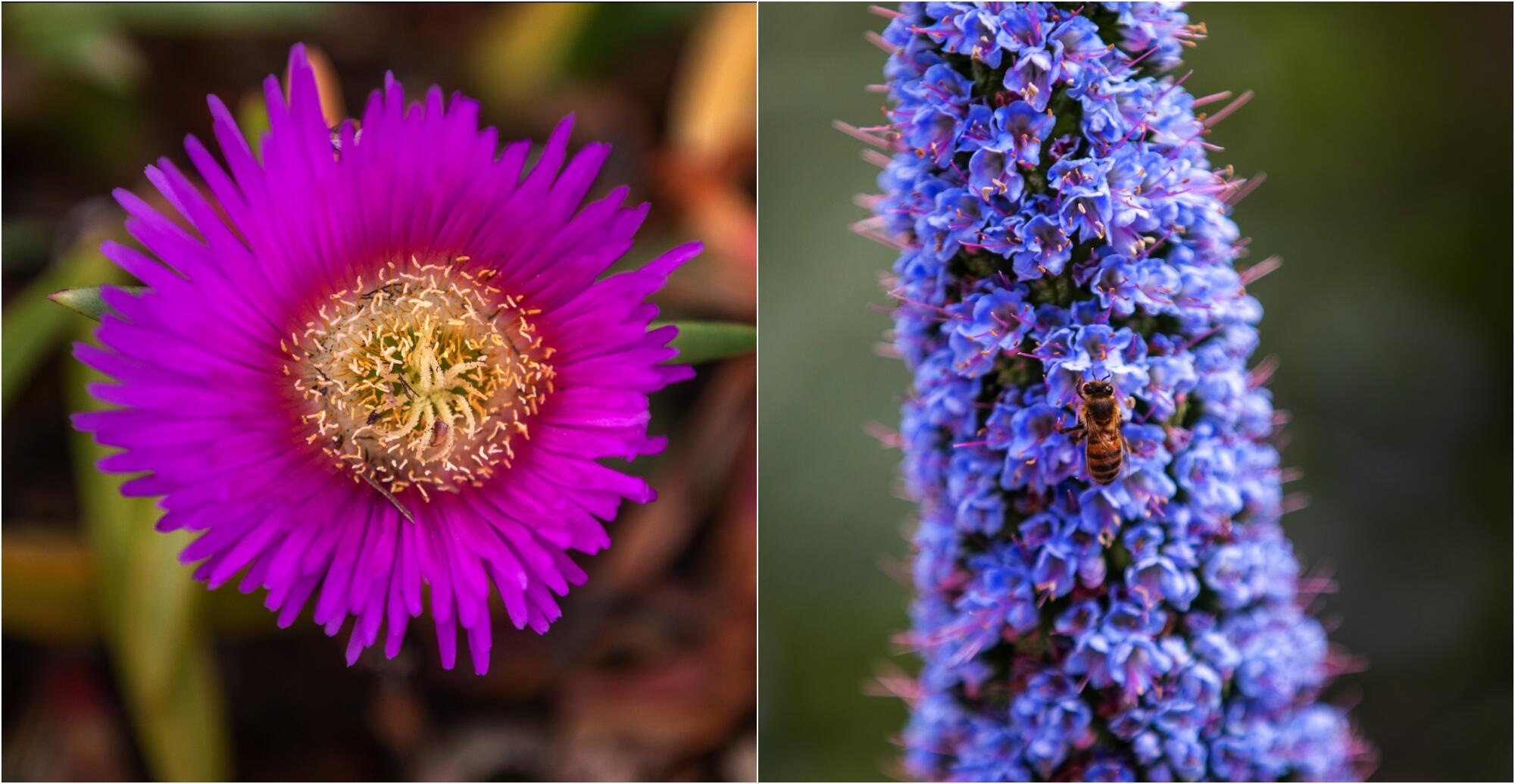
Roses have thorns, and this superbloom has briars too. All plants are thriving in these conditions, from native wildflowers to invasive weeds.
The growth has highlighted truths about our ecosystem that were easier to ignore in drier years: A changing climate has upended bloom schedules, non-native plants have altered the landscape, and many seemingly fallow fields are in fact just beds of dormant life waiting for the right time to bloom.
Flowers across Southern California are blooming enough to be seen from space. See the landscape transformed by spring.
There’s a lot to appreciate about the growth around us. There’s a lot to learn from it, too.
Even before industrialization and the climate change that resulted from human-caused greenhouse gas emissions, rainfall in Southern California varied considerably year to year, Yoder said. As a result, the region’s native wildflowers evolved to withstand periods of drought.
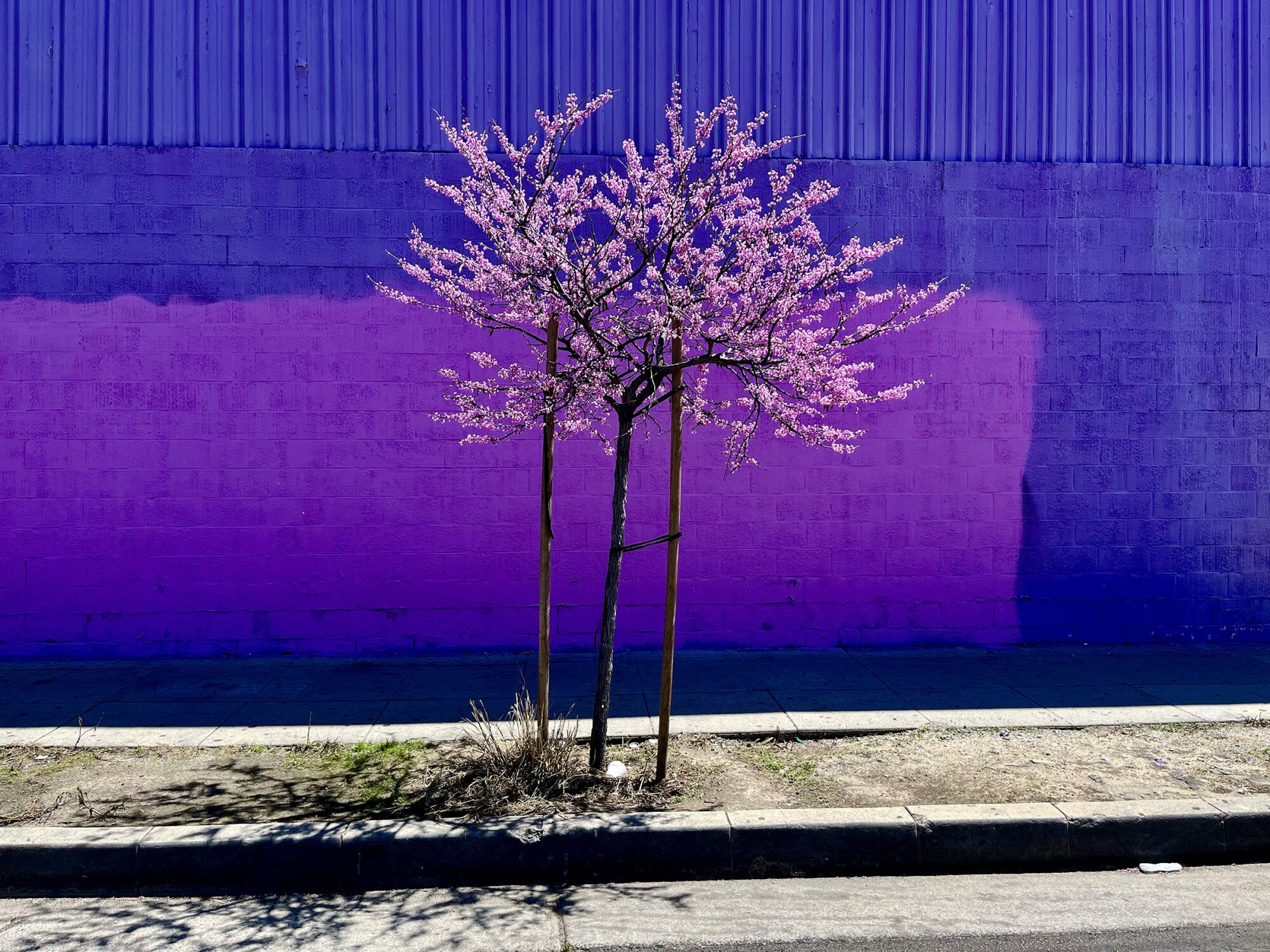
For a native annual like our state flower, the California poppy, “their whole life cycle is based on flowering quickly and making seeds and getting those seeds into what we call the seed bank in the soil,” he said. “They can hang out there until the next good year,” which could be next season or the next decade. “Then they get a good rain and a cold winter to prime them beforehand, and they go crazy.”
In periods of prolonged drought like we’ve experienced the last few years, many annual plants will allow only a selection of their seeds to flower. It’s an evolutionary strategy that lets plants play the long game: A few seeds from the bank are deputized to flower and drop more seeds, while the rest hold off on entering the vulnerable baby plant stage until conditions are more promising.
A bumper year like this one is both a visual feast and a down payment on future blooms. Today’s wildflowers will make further deposits into the seed bank that can survive in the soil for years until the right conditions come along — provided no one plows them under to build a big-box store or put up a parking lot.
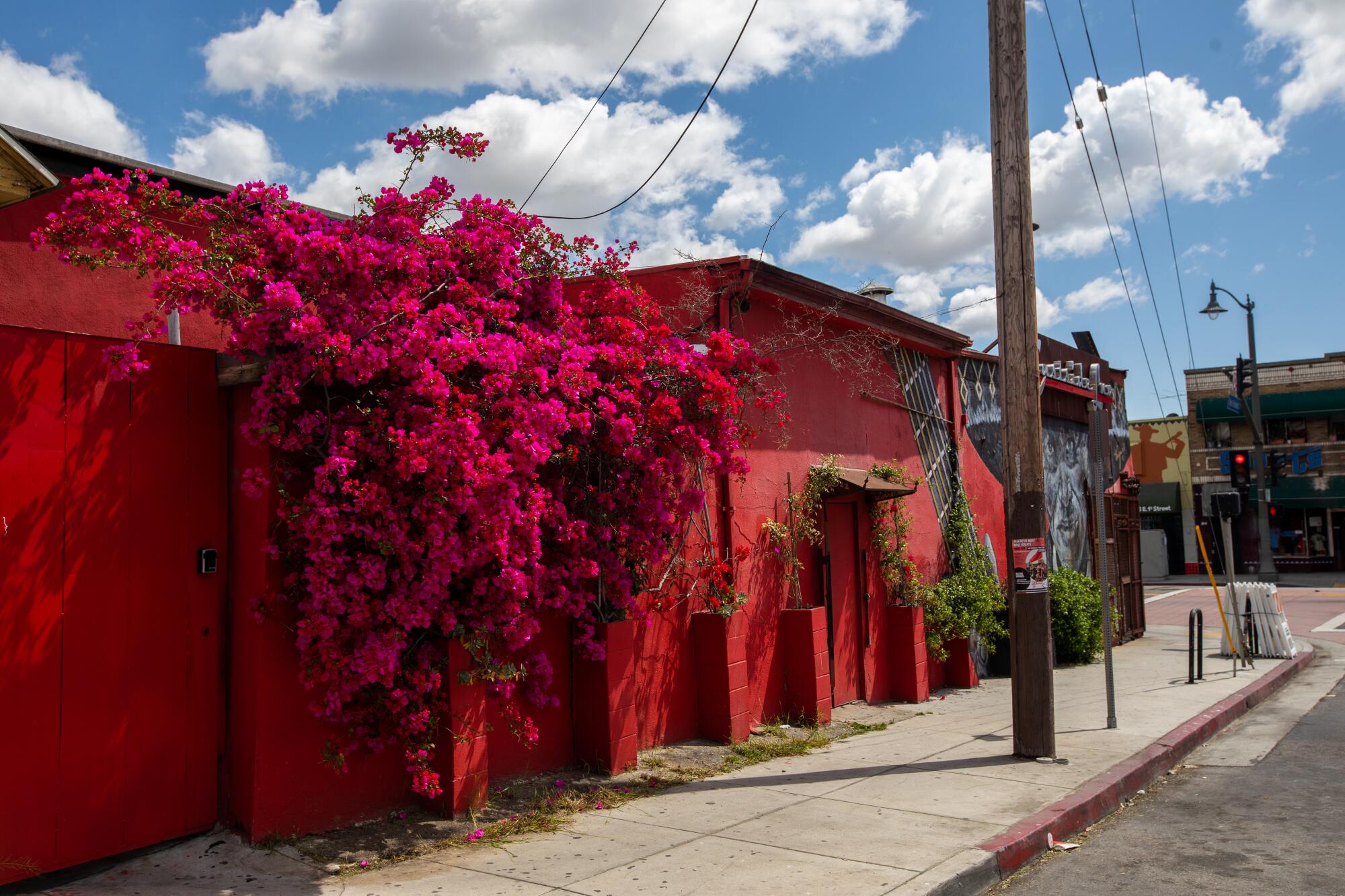
“You can go for a walk and under your feet are millions of seeds just sitting there in the seed bank. That potential for beauty in a landscape that is otherwise essentially barren in a non-good year is so freaking cool,” said Nick Jensen, director of the conservation program at the California Native Plant Society. “That is like the coolest thing. It still blows my mind, that that potential is there.”
If you take away nothing else from this season’s superbloom, let it be this: Do not confuse a dry brown hillside or field for a lifeless wasteland. It may be a nursery of wildflowers just waiting for the right time to flourish.
That potential for beauty in a landscape that is otherwise essentially barren in a non-good year is so freaking cool.
— Nick Jensen, California Native Plant Society
The inverse is also true. A brilliantly colored hillside doesn’t necessarily indicate a thriving, healthy ecosystem at work.
The vivid green grass on the foothills, the pops of fuchsia blossoms in thickets of coastal ice plant, the yellow flowers of black mustard: None of it is native to Southern California. A lot of it is also invasive, strong-arming (strong-rooting?) resources away from more beneficial native plants and disrupting the harmony of the ecosystem.
This isn’t a recent development. Those grasses that turn the hills green after a wet winter were brought here by the Spanish as early as the 18th century to serve as cattle feed. Black mustard arrived around the same time, planted — according to some accounts — along El Camino Real at the order of Spanish missionaries who wanted to highlight their route in gold.
“It’s been this 300-year-long process of colonizing this land, from both Native people and native plants,” said Jason Wise, an environmental educator in Los Angeles.
The result is a landscape that may be aesthetically pleasing from some angles, but that is fundamentally less resilient in the face of a changing climate.
Plants like Sahara or black mustard, common in Southern California but not native to it, can strangle native flowers and pose fire danger.
Southern California’s indigenous plants have evolved to be more fire-resistant. The Tongva, Tataviam, Chumash and other Native people who originally inhabited this land understood that fact and incorporated it into their land management practices through controlled burns that cleared away excess growth and catalyzed seed release.
In contrast, many invasive species ignite easily when an unexpected source of fire is introduced — be it lightning, a cigarette butt or a downed power line — and can quickly escalate into an out-of-control wildfire. Land managers and conservationists are worried that will happen this summer when those thickets of black mustard dry out.
“Whenever the season does turn to drier conditions and that vegetation is no longer as green, it’s going to be a bigger fuel supply for burning,” Yoder said.
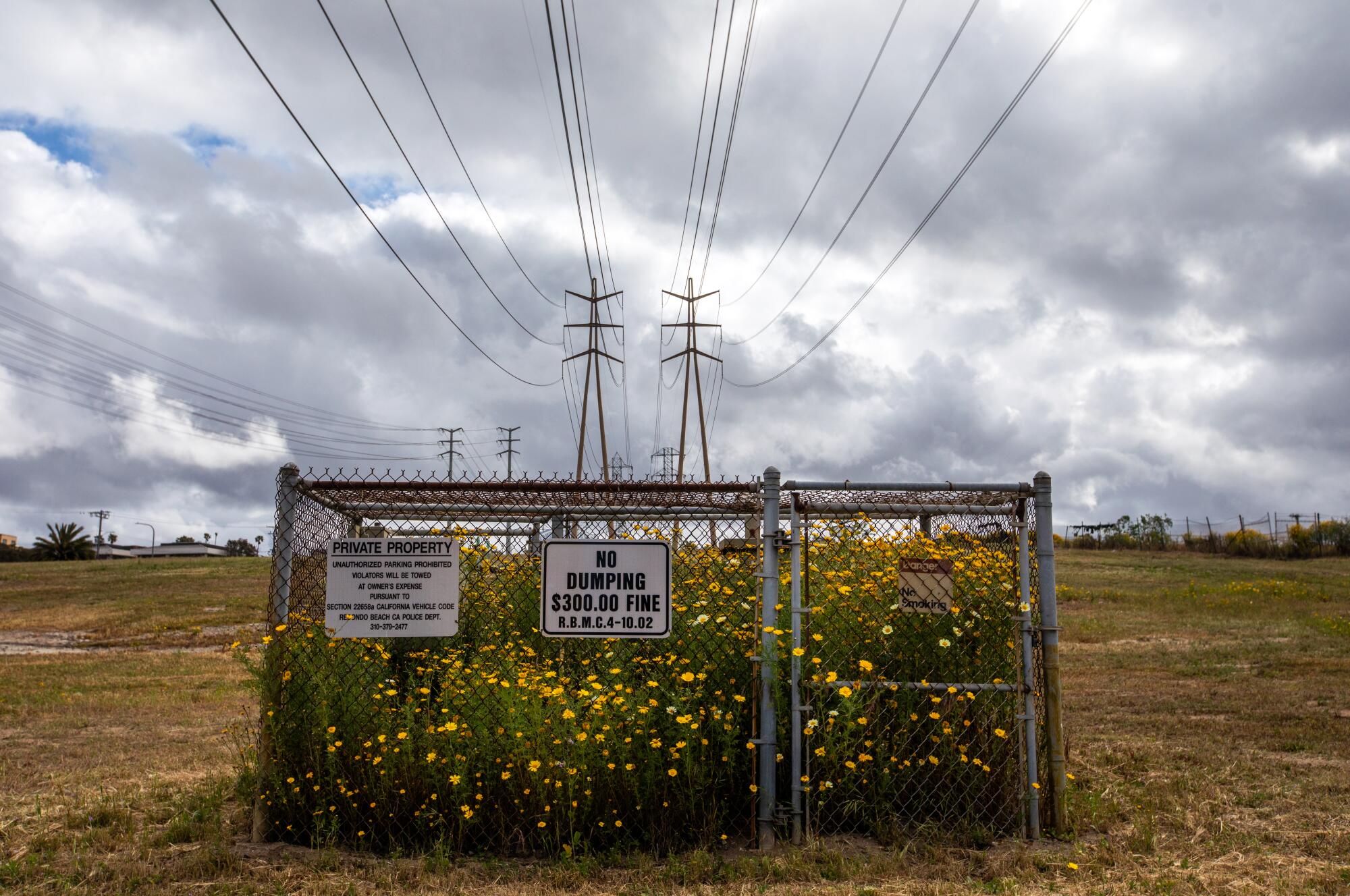
Multiple things can be true at once. There is a complicated story behind many of this spring’s dazzling flowers. Yet they still catch our eye and lift our spirits because they are pretty — and there’s a lot to be said for being able to appreciate the beauty in life wherever you happen to find it.
Not everyone gets the opportunity to drive out to one of the relatively few areas where wildflowers are protected and observe native plants in all their splendor. There are a lot of places in Southern California where flowering weeds and ornamental shrubbery spilling over the freeway retaining wall are the most accessible plants around. The feeling of joy they evoke still counts.
If you want to get up close and personal with blankets of goldfields, Canterbury bells, filaree and other native plants, your best bet is to take a hike.
When Wise takes groups of children on nature hikes and they see plants taller than they are, they don’t bother to ask if they’re invasive before exclaiming with joy. Wise says he tries not to crush that sense of wonder. Instead, he leans into it.
“I’ll say, ‘Yeah, it’s amazing how big these got. All the rain made them huge! Here’s where this plant comes from. And do we see what it’s doing to the other plants around it? Those ones have some pretty flowers too, but they’re kind of in the shade now. What do you think that plant thinks?’” he said. “Just providing more things to think about, some extra layers, without just being like, ‘No, that’s bad, don’t like that flower.’ That’s the nuance of a real-life conversation.”
This season’s flowers might leave behind more than the seeds of future blooms. Long after they’re gone, they may inspire a renewed desire to protect the land’s ability to surprise and delight us the way it has this year. What a legacy that would be.
“The seed bank is a really very, very precious thing, mysterious as it is. All the seeds of all of these gorgeous flowers we see were there, and no one could have told,” said botanist Lucinda McDade, director of the California Botanic Garden in Claremont. “Plants are amazing, I’m telling you.”
